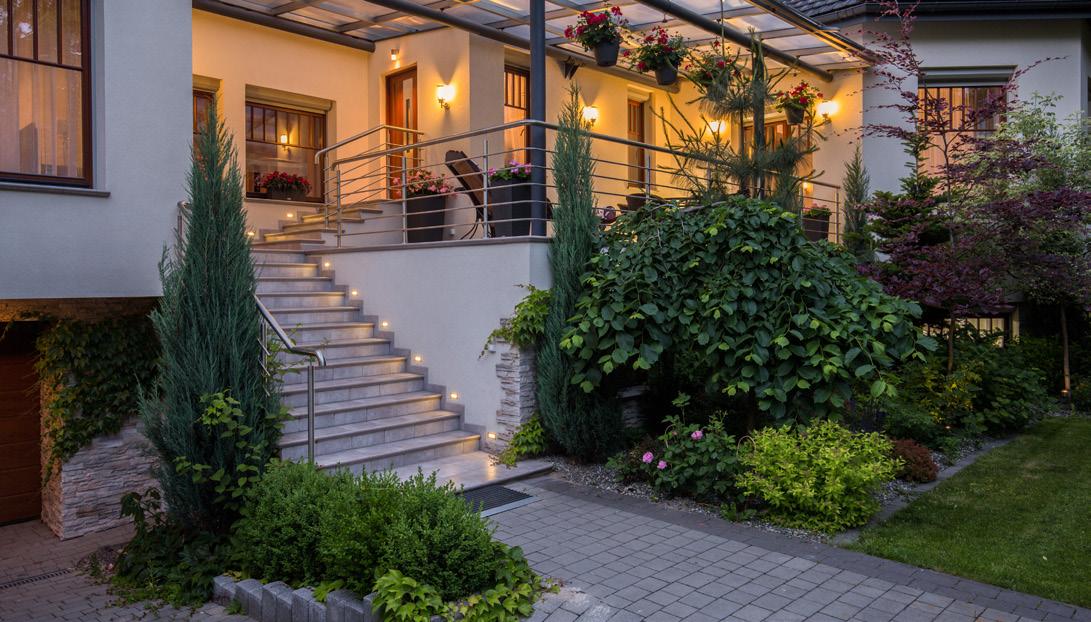
2 minute read
PROTECTING PROPERTY
HISTORIC PROPERTIES PROTECTING PROPERTY
How much insurance coverage is enough?
By Connie Sutton
The biggest mistake homeowners make when seeking insurance is not buying enough. A homeowner’s policy can help repair or replace a home and personal belongings under certain circumstances. It also can cover costs for accidentally damaging another person’s property or injuries on the property. Unfortunately, three out of every five Americans are underinsured, some by as much as 20% according to Consumer Reports.
When selecting a policy, choose enough coverage to:
• Rebuild the home in case of damage (extended dwelling coverage) • Replace the furnishings and belongings (personal property) • Cover injuries and damages that happen on the property (liability) • Reimburse living expenses in the event of losing the home (additional living expenses)
DWELLING
Dwelling coverage helps homeowners rebuild the house if it is destroyed in a disaster. Dwelling coverage should equal the cost to rebuild the home. Speak to an agent about average costs, and factor in extra costs if the home has features that require special craftsmanship. For older homes, discuss building code coverage. Older homes will need to comply with new building standards when being rebuilt and building coverage will pay for specifics that new codes require. PERSONAL PROPERTY
Personal property coverage applies to home furnishings, appliances, clothing, electronics and sporting equipment. Because people collect belongings slowly over time, it can be easy to lose sight of the true value of personal property. Make a detailed inventory of every item you own. Remember, what takes a few hours to inventory could take a month or two of pay to replace. So, be as detailed as possible. For highend items, like jewelry or musical instruments, separate the replacement costs and ask an insurance agent if an additional policy is necessary. LIABILITY
Accidents happen. Liability coverage will protect homeowners from expensive lawsuits or medical bills if an accident occurs on the property. On average, homeowner’s policies have a minimum of $100,000 in liability coverage, but experts recommend purchasing as much as possible. As a side note, not all dog breeds are covered by a policy. If you have a dog that is considered high risk such as a pit bull, Doberman, rottweiler, chow, German shepherd, wolf-dog hybrid or any other large breed, confirm coverage with an agent. ADDITIONAL LIVING EXPENSE
Also known as ALE coverage, additional living expense coverage reimburses the policyholder for the added costs of living, such as hotels and takeout meals, if an accident leaves them with nowhere to cook or sleep while the home is rebuilt. Most homeowner’s insurance policies use a percentage of the extended dwelling coverage to calculate ALE, usually providing between 20–30%. For larger families, the ALE could be higher, so ask an insurance agent how to obtain more coverage, if needed.
When it comes to your biggest investment, your home, you can’t afford to be underinsured. Work closely with your insurance agent to make sure you have all the coverage you need in the event of a home catastrophe. If you have an existing policy, schedule an appointment with your agent to review current coverage and make changes if needed. If you’re shopping for a new policy, ask friends and family for a referral to an agent they trust so you can make sure you get the amount of coverage you need to keep your home and belongings safe.









